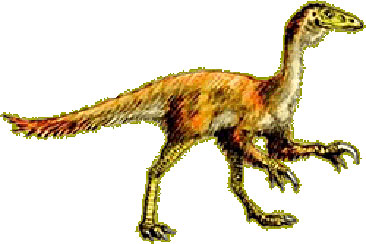Alvaresaurios Calvoi See map
This small creature of the Cretaceous, found in the formations of fences surrounding the city of Neuquén, was originally described as a possibly scavenger carnivorous dinosaur.
It has recently been reclassified and placed it directly as an avian dinosaurs, more precisely the copy gives name to the family Alvarezsauridae that among other animals includes Patagonikus Puertay (another dino of Patagonia) and Mononychus Olecranus, an unusual and remote bird of Mongolia.
 Alvaresaurio Calvoi.
Alvaresaurio Calvoi.Alvarezsauridae's family is also closely related to the oldest and most famous bird known, the archaepteryx, whose fossils were found globally widespread in Germany. Alraezsaurus was mistaken for a dinosaur and not aviano because its skeleton was much resembled to theropods (carnivores) as well as to primitive birds.
It was a running bird whose arms were completely atrophied, thou as well as the Unenlagia comahuensis at its tip was only a kind of finger with a sharp claw.
The Alvarezsaurus had one meter long and just 70 centimeters tall. It is estimated that he did not eat any meat. Scientists found only forty percent of the bones of this animal which complicated the investigation and determination of all its features.
Bones and a natural size replica are exhibited in the museum of the National University of Comahue. The curious thing about this finding is that it was few meters from where it was later studied.
Nearby, in the same strata of the Cretaceous period, it were also found fossils of a Notosuchus, a primitive crocodile. Only part of the land has been preserved and properly studied, following the inevitable advance of the capital city of Neuquén.
Viajes por la Patagonia
Related Articles
© Patagonia.com.ar 2025 | Todos los derechos reservados.
